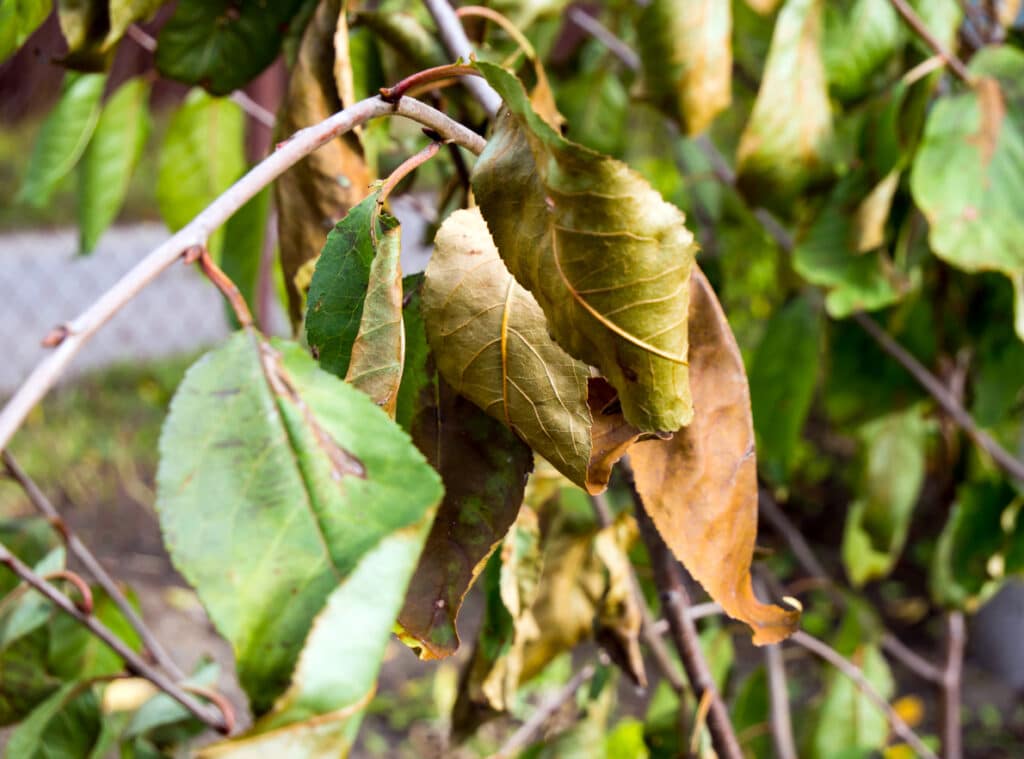Diseases are as dangerous to trees as they are to people. Fungal diseases are particularly sneaky because they often have no obvious symptoms at the early stages. However, if you look closely, there are several telltale signs that can alert you to the presence of a fungal disease. Here’s what you should look for.
Discoloration of the Leaves or Bark
If you see any yellowing, browning, or wilting of the leaves and bark, it could signify that your tree has a fungal infection. The leaves become discolored because the disease blocks their ability to absorb light from the sun. The disease can also cause the water-conducting tissues to become blocked, preventing the tree from taking in enough moisture. This will cause the leaves to droop and eventually fall off.
Mushrooms or Fungal Fruiting Bodies
Fungal diseases often produce mushrooms or other fungal fruiting bodies at the tree’s base. These growths can look like small, white balls or even large, colorful mushrooms. They can even appear on the tree’s trunk or branches.
Excessive Sap Production
Sap is the tree’s natural defense against disease, so if you see a large amount of sap oozing from the trunk or branches, it could be an indication of a fungal infection. The sap, or resin, might also have an unpleasant odor.
Stunted Growth
Sometimes a fungal disease can cause the tree to grow more slowly than normal. This is often accompanied by a decrease in green foliage and fewer new shoots or branches. Your tree might also be more susceptible to damage from other pests or diseases.
Galls or Blisters on the Leaves or Bark
Fungal diseases can also cause galls, blisters, or lesions on the leaves and bark. These growths are often raised or discolored, and they can be soft or hard. They may contain fungal spores that can spread to other parts of the tree if not treated properly. They can also cause significant cosmetic damage if left untreated.
Unpleasant Odors
Fungal diseases can produce an unpleasant odor as the fungus starts to decompose organic material. The smell can be musty or moldy and can often be detected from some distance away. It can also attract other pests and organisms that can further damage the tree.
Spotty Growth Patterns
Trees are supposed to grow uniformly, but if one area grows faster or slower than normal, it could signify a fungal disease. Look for discolored patches or areas that appear to be growing differently from the rest of the tree, as this could signify that it has a fungus.
Low Fruit Production
Fruits are a sign of a healthy tree, so if your tree’s fruit production has declined, it could be a sign of fungal disease. The fungus can prevent the tree from flowering and fruiting properly, so look out for stunted or underdeveloped fruit.
If you notice any of these signs, it’s important to take action as soon as possible. A fungal disease can spread quickly and cause serious damage to your tree. You should consult a licensed tree care professional who can diagnose the problem and provide the necessary treatment to keep your tree looking its best. Contact us at Five Star Professional Services LLC in Kalamazoo, MI for advice on how to treat the disease and keep your tree healthy and strong or tree removal services if the tree is too far gone.




